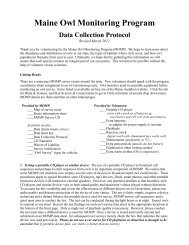Focus Species Forestry - Maine Audubon
Focus Species Forestry - Maine Audubon
Focus Species Forestry - Maine Audubon
Create successful ePaper yourself
Turn your PDF publications into a flip-book with our unique Google optimized e-Paper software.
5. Habitat Management Guides<br />
The following pages include management guides for the six forest ecosystems and special-value<br />
habitats used in focus species forestry. Each habitat guide describes typical identifying<br />
characteristics, ecology, and wildlife 2 .<br />
<strong>Focus</strong> <strong>Species</strong> List<br />
The focus species lists for each habitat type are divided into three development stages: early<br />
successional forest, mature forest, and late-successional forest. See Table 2 for a definition of<br />
these development stages. By focusing on both ends of the forest maturity spectrum, habitat<br />
specialists that require young or old forests are accommodated as well as the great number of<br />
species that live in a broad range of development stages. Following are some notes on the species<br />
lists in the habitat management guides:<br />
• There are no late-successional species for aspen-birch because this is a short-lived stand<br />
type that does not develop true late-successional characteristics.<br />
• There are no early successional focus species listed for eastern hemlock or northern white<br />
cedar. Due to the limited extent of these ecosystems, their great value as mature conifer<br />
cover, and the potential for rare plants in cedar-seepage forests, the recommendations<br />
focus on maintaining habitat associated with mature or late-successional phases of these<br />
stands.<br />
• Most research on late-successional species (mostly lichens) has been associated with<br />
northern hardwood, spruce-fir, and northern pine (i.e., not oak-pine) types. Little is<br />
known about other types, but a conservative approach to management suggests allowing<br />
some stands of all types to reach the late-successional stage.<br />
<strong>Focus</strong> <strong>Species</strong> Management<br />
This section describes natural disturbance regimes (fire, insects, disease, etc.) for each forest type<br />
and the silvicultural tools that can be used to create and maintain focus species habitat. <strong>Focus</strong><br />
species forestry does not attempt to “mimic” the time scales of natural disturbance because even<br />
under the most conservative management trees are harvested much more frequently than they<br />
would die under natural conditions. However, natural disturbance regimes can be used to inform<br />
and help guide forest management, especially by modifying silviculture to produce stand and<br />
landscape structures that are found in natural, unmanaged forests. Refer to Appendix 3 for an<br />
overview of silvicultural systems.<br />
The management recommendations in the following section should be implemented in the<br />
context of the stand-level management guidelines (Section 7), the landscape-scale forestry guide<br />
(Section 8), and the recommendations for focus species associated with that habitat type.<br />
2 “New England Wildlife: Habitat, Natural History and Distribution” by Richard DeGraaf and Mariko Yamasaki<br />
(2001) provides a comprehensive review of wildlife associated with the region’s forest ecosystems.<br />
<strong>Focus</strong> <strong>Species</strong> <strong>Forestry</strong> 17



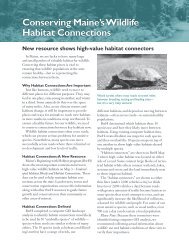
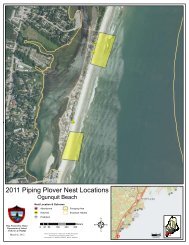

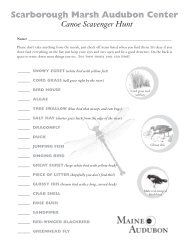


![2012 Loon Count Results [pdf] - Maine Audubon](https://img.yumpu.com/26228732/1/190x245/2012-loon-count-results-pdf-maine-audubon.jpg?quality=85)
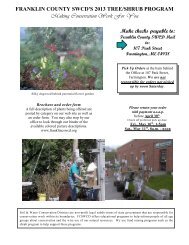
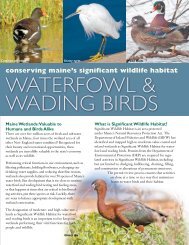
![Lake Fish of Maine (DIFW list) [pdf] - Maine Audubon](https://img.yumpu.com/23282964/1/190x245/lake-fish-of-maine-difw-list-pdf-maine-audubon.jpg?quality=85)
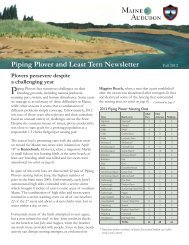

![The Maine Audubon Peony Circle of Friends 2012 [pdf]](https://img.yumpu.com/22707677/1/190x253/the-maine-audubon-peony-circle-of-friends-2012-pdf.jpg?quality=85)
